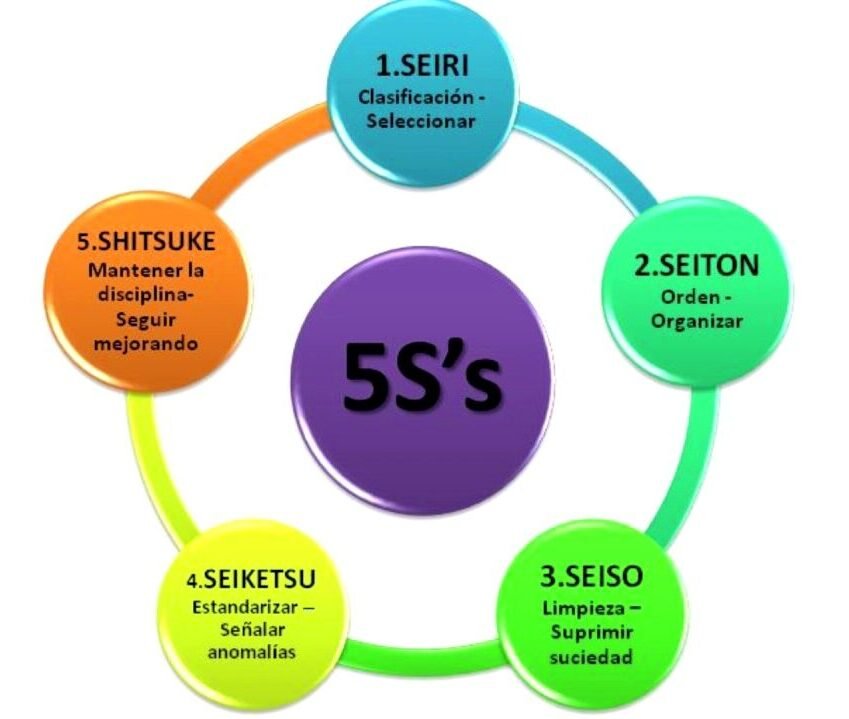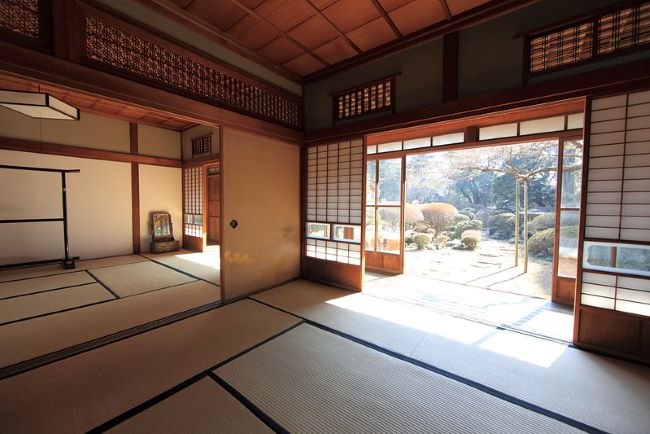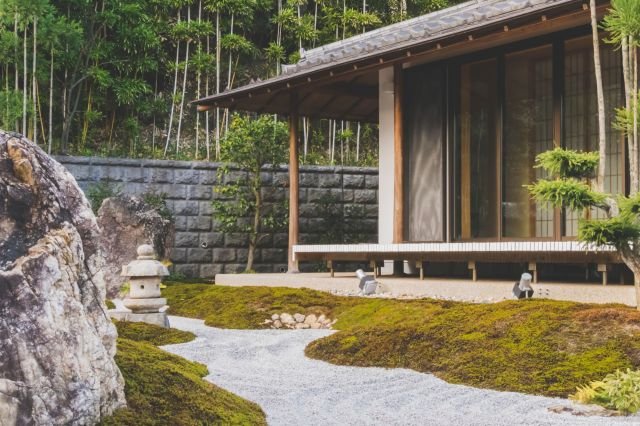“Freedom is the only worthy goal in life. It is won by disregarding things that lie beyond our control.”~Epictetus
Minimalism is a lifestyle, a mindset. It is more than just decluttering and using less. It can’t be accepted in a day, also it can’t be taught. Some Japanese concepts well align with the minimalist mindset. To know about the principles they believe in these are not enough. It doesn’t mean that Japan completely minimalist country. They also love to buy things, they have variations. But yes, compared to the rest of the world they do have different ways of seeing things. Let’s know some of these.
In the 1990s, Toyota Motor Corporation introduced their Toyota production system(TPS) to eliminate waste and maximize their production in an organized manner. TPS is based on two main pillars: Jidoka and just-in-time. The first one, Jidoka is “automation with a human touch”, to incorporate the best working environment. And just-in-time is the principle of making only what is needed, when it is needed, and in the amount it is needed.
TPS introduced the industrial world to some principles; in Japanese words, five of them start with ‘S’, so this is called the 5S method. The methodology is not only applicable in the workplace but in overall life, these Japanese concepts align with the minimalism life philosophy as well. Let’s introduce you to those terms!

Seiri(整理)- Organization or Sorting
Seiri is mainly to get rid of the unnecessary clutter and keep only what is needed. In workplaces, keeping sort of everything saves from getting overwhelmed. Extra clutter only produces waste, nothing to gain here!
In life, if minimalist life is the purpose then think what you really need. Keep those and unapologetically get rid of everything else.
Benefits?
- Less stress
- Reduced waste
- Saves time and energy to manage a pile of things
- Simplifies the activities
- Enhances our focus on the real priority without distraction
Seiton(整頓)- Orderliness or Set in Order
The concept is to keep in order everything; “A place for everything and everything in its place”. What’s the common habit among us? We keep things wherever find space. Then we don’t find things when needed as we forget where kept.
How to implement Seiton?
- Think about the frequency and sequence of use
- Things used more frequently, keep them in one place and others in a different place
- Don’t use many tools or equipment to organize
- Keep everything in its original place after use
Benefits?
- You don’t have to stress over finding things at a time
- Workflow will smooth and efficiency will increase
- Enhances productivity
- Most importanly saves lots of time and mental frustration
Seiso(清掃)- Cleanliness
Seiso focuses on cleanliness and regular maintenance. In workplaces, tidiness is absolutely fundamental. Regular inspection finds potential issues and mistakes to solve in time. There might not be a second chance to solve issues in professional sectors; Seiso is practiced to avoid that unfortunate happening. Minimalism extensively integrates tidiness in life.
How to implement Seiso?
- Keep your equipment and place clean
- Examine the used items regularly
- Remove sources of potential issues
Benefits?
- Improves productivity and efficiency
- Prevents error and defects in workplaces
- At home, the living environment becomes peaceful
- Gives a sense of ownership and responsibility to take care of their space
Seiketsu(清潔)-Standardize and Accountability
Seiketsu is the balance of discipline and accountability. Seiri, Seiton, and Seiso aren’t a one-time activity but a repetitive process. Seiketsu teaches us to be accountable for the activities we do and the responsibility we have. TPS introduced this term to have consistency among workers and have clear instructions of tasks.
But if applied in life overall, then it is to complete one’s daily activities and duties.
How to implement Seiketsu?
- Having a checklist of daily or weekly activities helps
- To have a clear understanding of one’s responsibility of tasks in organizations so that there isn’t a gap
- Creating a structure for completing the assignments
- In the morning routine, planning the day ahead creates a sense of accountability
Benefits?
- Keeps consistency toward the responsibilities
- Reduces procrastination and having a pile of work
- Continuous improvement is more like kaizen
Shitsuke(躾)-Sustainability
Shitsuke is “do without being told”, a habit building, and having self-discipline. Waking up early, having a healthy diet, exercising, journaling, and doing anything else require discipline. Once we build that into a habit, automatically integrates into our activity.
How to implement Shitsuke?
- In workplaces, training sessions help workers to adapt to the environment and working process.
- Whatever the one thing you are trying to build a habit into, keep consistently doing that until it becomes a reflex
- Also, strong organizational culture and values maintain the sustainability
Benefits?
- Ensures long-term improvement
- Builds self-discipline
- Sustainable efficiency at work and home
Although 5S methods are introduced in the production system, they will infuse into daily life in general. There are seven principles in zen philosophy:
Fukinsei (asymmetry), Kanso (simplicity), Shizen (naturalness), Datsozoku (unconventional), Seijaku (tranquility), Kokou (Austere), and Yugen (subtle, profound).
Some of these directly connect with the concepts of minimalism, and some are not. Here are some minimalist terms Japan uses-
Wabi-Sabi (侘寂)- Imperfection, Simplicity
Minimalism embraces wholeheartedly the natural flow of life with all its imperfections and flaws. Wabi-Sabi teaches the same. It is the Japanese concept of imperfection, simplicity, and flaws. From the Chinese tea ceremony to Japanese wellness culture, it surely has a rich history. Over time, Wabi-Sabi has become a mindset. It synchronizes harmony with reality, showing the harsh truth that nothing can be perfect. Thus, that’s what makes nature so peaceful.
How to implement Wabi-Sabi in life?
- Practice looking with the eyes of acceptance rather than complaining.
- Don’t try to be perfect; try to be the best at what you’re doing.
- Leave a judgmental mindset.
- After a storm, be ready to stand strong again and again.
Learn more about Japanese wellness cultures here.
Fukinsei (不均斉) – Asymmetry
Symmetry and regularity have become the center of the industrial world. But Fukinsei teaches us the opposite. It refers to asymmetry and irregularity. Being a part of Wabi-Sabi, embraces the beauty in flaws.
The Enso circle in Zen Buddhist teachings is drawn incompletely, encouraging us to embrace the flaws and irregularity of life. Nature is not symmetrical; there’s no pattern in colors or structures in nature. But that’s the beauty. Fukinsei is learning to appreciate the asymmetry of home, nature, and overall life.
Datsuzoku (脱俗) – Freedom from the Usual
“Think outside the box” is a common phrase used to encourage creativity and stepping out of the conventional. Datsuzoku is a Japanese Zen principle that means freedom—breaking free from convention. The deeper we go into the meaning, the more beautiful it gets.
If you are asked: What does your morning routine look like? You will probably answer from your checklist—exercise, breakfast, journaling, etc. Always following the same routine and repetitive tasks brings boredom. Datsuzoku gives you the freedom to explore different things, and surprises, and go outside your comfort zone. Tweaking the mundane daily routine a little can keep the excitement alive.
How to implement Datsuzoku?
- Instead of planning breaks or vacations, first, tweak your daily tasks. For example, in exercise, try different things instead of doing the same every day.
- Break free from the thought that this is what must be done—think this can be done as well.
- Don’t feel guilty just because you have added something fun to your routine that isn’t conventionally “productive.”
Yugen (幽玄) – Subtle depth
Have you ever looked at a painting and felt sad, even though the painting doesn’t depict a tragedy? I have often looked at the ocean and thought about how insignificant I am compared to the vast, limitless sea.
Yugen is showing more by showing less—a mysterious sense of beauty in the world. Art often triggers unexpected emotional responses in humans. Staring at the sky or looking at the full moon can bring sadness despite the immense beauty it holds. The universe has this ability to reconnect us with nostalgia and the symbolism of other thoughts.
Think about Mona Lisa—the beholder’s perspective varies; sometimes, she appears sad, and sometimes, she seems to be smiling. That’s the mystery, and that’s Yugen. Another great example is poetry—few words, yet they depict great histories or stories behind them.
Shibumi/Shibui (渋み) – Understated Elegance>
Shibui is simply the opposite of ostentatious—it can apply to a person, an object, furniture, or decor. Finding timeless designs is the essence of a minimalist lifestyle. Not everything flashy is beautiful; sometimes, the simplest architecture can be the most stunning. Japanese minimalism believes in the principle of subtle elegance rather than showing off. They prefer understated traditional pieces over modern, fancy ones.
Natural textures like wood in furniture, linen in clothes, and muted colors in lifestyle objects can bring out elegance more than anything. Japanese kimonos are a great example of Shibui.
Ma (間) – Space or Gap
Ma means “negative space,” or in a deeper sense, “gap or pause.” It is widely used in Japanese architecture. They consciously leave empty spaces in their living rooms and empty walls. Minimalist tatami room structures have smooth lines and clean surfaces, everything is tidy, making the room look spacious and empty.
Beyond architecture, Ma is applicable in life as well. You cannot imagine how inextricably Ma is linked to our lives. Ma is the beauty of comfortable pauses in conversations, intermissions in a movie, tea breaks between work, and keeping the phone away to increase productivity.
How to implement Ma in life?
- Though an interior design term, take conscious breaks amidst all the checklists you need to complete.
- For minimalism practice, start by keeping space in your home.
- Tidy up your space to give opportunities for something else to come.
- Recognize the breaks and pauses in everything as beauty, not flaws.
Seijaku (静寂) – Tranquility and Peace
“If you seek tranquility, do less. Or (more accurately) do what’s essential.” ~ Marcus Aurelius
Seijaku means serenity and tranquility. It is linked with ‘Ma’ and is a principle of Zen Buddhism. If Ma is the gap and space, Seijaku is the outcome of that gap or space, giving calmness and peace. It teaches us how to remain at peace with all the mental and physical pressures we experience on a daily basis.
To bring tranquility to life, stress management is the first step. Minimal decor can reduce stress from clutter. Cozy lighting, a walk in nature, mindfulness practice, and meditation bring peace and calmness to the mind. Japanese gardens and decor are structured in a way that brings Seijaku.
Kanso (簡素) – Simplicity
Kanso is one of the seven principles of Zen philosophy, referring to “simplicity and purity.” It is a part of Wabi-Sabi and doesn’t work individually. Kanso is well aligned with ‘Ma,’ where simplicity and the elimination of extras are the main goals.
Multifunctional furniture, quality and clarity over decoration, and practicality are what Kanso refers to. Ma is the space, Kanso is getting rid of the clutter to create Ma, and Seijaku is the ultimate result—peace and calm.
Mottainai (勿体無い) – Regret of Waste
When we see something being wasted, we say, “What a waste,” as a regret or advice, “Don’t waste this.” This is the meaning of Mottainai. Though it is a Japanese concept, Wangari Maathai (a Kenyan political and environmental activist) brought this concept worldwide to raise awareness against climate change.
Mottainai regrets waste, embraces the concepts of reuse and recycling, and respects the intrinsic use of things. For the samurai, the katana is not just a sword—it holds their culture and pride, which is why they respect it. The Japanese use leftover veggies in recipes, have a strict waste-sorting process, recycle old kimonos into different useful items, and practice the art of Kintsugi. Their strong sense of managing waste and respect for the things they use is one of the principles of minimalism.
Mottainai teaches us to take only what we need and to respect what we have. A pile of things, then just disposing of them without any consideration of waste and the environment, is what irresponsible behavior is called.
How to implement Mottainai in daily life?
- Simple practices of waste management
- Be mindful of what you are using on a daily basis
- Value what you have
- Always recycle worn-out things
Shizen (自然) – Nature, Natural, Spontaneous
The literal meaning is somewhat different from what Shizen truly represents. Japan has successfully created harmony with nature in the modern world.
The distinction between the seasons is difficult where I live. Summer and winter are distinguishable because of temperature, but autumn and others just vanish. However, Japan has better seasonal awareness than other countries. From architecture to their lifestyle practices, everything is structured in a way that allows them to enjoy every change in weather and appreciate its beauty wholeheartedly. Their sliding doors made of wood, seasonal food, and different structures for homes in summer and winter are practices that have kept them aligned with nature.
The second meaning of Shizen is “natural,” which is different from what it literally says. Shizen doesn’t mean that “natural” is devoid of human interference or completely untouched. Japanese gardens are designed to give a natural environmental feeling but are strictly maintained by humans. The bonsai tree is another example—it is part of nature, but its beautiful shape is a result of human creativity. They have established that even though something is man-made, it can still be an integral part of nature and doesn’t necessarily have to be artificial.
Mu (無) – Nothingness or Void
Zen Buddhism teaches the practice of removing mind clutter. Mu is a term that refers to nothingness, an empty space. Whether through the practice of ‘Ma’ or Kanso, in a minimalist lifestyle, creating space for better clarity is the number one principle. Japanese tatami rooms and consciously keeping walls empty are not just architectural designs but also symbolize that to have calmness, you need to create voids.
When our minds race with thoughts, we practice looking at a wall without any thoughts or candle gazing to create mental space. That void is not negative; rather, it creates space for creativity, peace, and the enjoyment of what really matters.
Mu also means the absence of attachment to things and people. We suffer most from attachments and unhealthy expectations. If we create meaningful nothingness—life without unhealthy attachments—we can ensure absolute presence in the moment.
How to practice Mu?
- Consciously remind yourself to have less attachment to things and people.
- Practice keeping your mind empty; start with a few minutes.
- Create space for something else in your room, mind, and life.
Everything depends on how we perceive our life, what we want to be, and how we want to live. I would end with a Stoic quote from Meditations by Marcus Aurelius:
“Very little is needed to make a happy life; it is all within yourself, in your way of thinking.”




